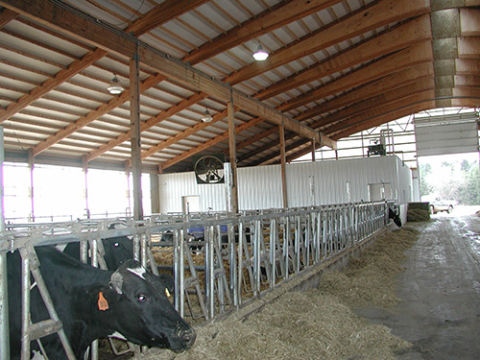



Strategies for early cow dry off
Estimates are that COVID-19 has caused the supply of milk to exceed the demand for milk by up to ten percent. The hope is that this reduced domestic demand and lower exports will be temporary.As a result, in some areas of the country, processors are dumping milk. Other farmers are under milk quotas or are being asked to reduce supply.
Strategies for early dry off
Strategies that purposely decrease milk production in early lactation cows will decrease milk production the entire lactation. However, it is important to develop a strategy for dry off and treatment of cows with long dry days to minimize the risk of transition problems when these cows calve again.
One of the main goals should be to maintain cow health and ensure that cows have the capacity to resume normal milk production in the subsequent lactation. Here are some ideas to consider that will increase the likelihood that this strategy is successful.
Adhere to dry off protocols
Management practices to reduce milk production of high producing cows at dry off will reduce the risk of dry period mastitis.
- Research studies have shown that there is an increased mastitis risk when drying off high producing cows versus lower producing cows. Rapid teat end closure after dry off reduces the likelihood of new mastitis infections.
- Reducing the nutrient density of rations rapidly reduces milk production in cows. Feed a high forage diet and reduce corn silage and grain intake.
- Reducing the milking frequency can also be an option. Do this in conjunction with, not instead of a reduced nutrient density diet. Reducing the number of milkings can be done without increasing mastitis risk, provided teat ends are kept clean and dry. It is also beneficial to use teat sealants to reduce the risk of mastitis.
Feed appropriate diets
Gaining weight during the dry period increases the risk of metabolic disorders at calving.
- The energy requirement for dry cows is very low. House these cows in an area where they get adequate exercise and can be fed a very low energy diet.
- The goal is to maintain a body condition score of 2.75 to 3.25 out of 5. Housing these long term dry cows with growing heifers or feeding a diet to gain weight will set them up for an unsuccessful next lactation.
- Work with your nutritionist to formulate diets based on dry matter intake that meets the cow’s nutritional needs while monitoring body condition score.
Provide adequate housing
Do you have enough space to house the extra dry cows? Many dry cow pens are already at maximum capacity. One option is to create a pasture or dry lot for these cows.
- It is important that this area is large enough, contains shade, and is well-drained.
- You can use portable feeders or a feed line with cement so these cows stay clean and dry.
- If the lactating barn has space, consider creating a dry cow pen in that barn.
Control temperature to improve future milk production
Nine research trials done on cooling dry cows all have shown an improvement in milk production the subsequent lactation. Another reason to cool dry cows is that heifer calves born from cooled cows produce more milk
Drying cows off early can be part of a comprehensive plan to temporarily reduce milk production while maintaining cow numbers. Work with your nutritionist and veterinarian to develop dry-off and feeding strategies that do not affect the long-term health of the cows or productivity of the herd.



